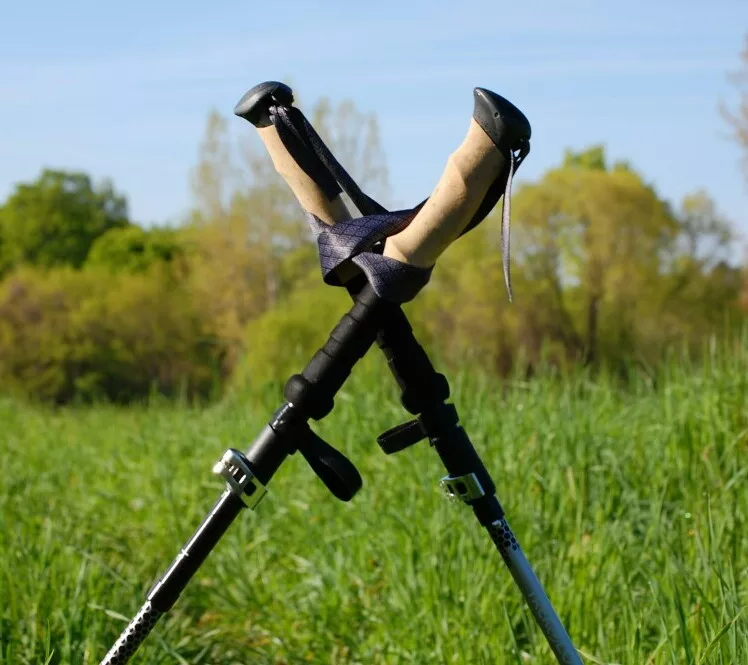Should You Use Trekking Poles on Your Hike?

As an avid outdoorsman, I’ve spent countless miles on the trails, and one of the most hotly debated topics among fellow hikers is whether to use trekking poles. Personally, I’ve found that trekking poles are an invaluable part of my backpacking gear. On my first long-distance hike, I was skeptical about their benefits, but I decided to give them a try. The difference was noticeable almost immediately. These handy tools significantly reduce the impact on my knees, especially on steep descents. The added stability was a game-changer during tricky river crossings and uneven terrain.
However, trekking poles do come with a few drawbacks. They can be cumbersome to carry when not in use, and navigating tight spaces sometimes becomes a bit of a hassle. Despite these minor inconveniences, the benefits far outweigh the drawbacks for me. The added support and improved posture have made my hikes more enjoyable and less strenuous. If you’re weighing the pros and cons of trekking poles, I highly recommend giving them a try on your next adventure. They might just become an essential part of your hiking and backpacking gear, as they have for me.
The Good
Reduced Impact
One of the biggest advantages of using trekking poles is the reduced impact on your body. They alleviate stress on your knees and hips, especially during those grueling ascents and descents. By providing additional support, they help reduce joint stress and the risk of falls, making your hike more enjoyable and less painful.
More Stability
Trekking poles add extra points of contact with the ground, which is invaluable when traversing difficult terrain. This added stability improves your balance, reduces fatigue, and makes it easier to tackle rocky, uneven paths.
Better Traction
On snowy, muddy, or loose terrain, trekking poles can be a lifesaver. They enhance your stability and significantly reduce the risk of fall-related injuries. Whether you’re crossing a slick stream or navigating a muddy trail, poles provide the traction you need.
Enhanced Safety
In emergency situations, trekking poles can serve multiple purposes. They can be used as splints for injuries or as defensive tools against wildlife. Additionally, they help you clear obstructions like spider webs or thorny bushes from the trail.
Better Pacing
Using trekking poles can help you maintain a rhythmic pace, which improves your hiking efficiency and reduces overall fatigue. The consistent motion of moving the poles in sync with your steps can also make long hikes feel less strenuous.

The Bad
Increased Weight
One downside to trekking poles is the added weight to your pack. While modern poles are often lightweight, even carbon fiber models add to your load. This is something to consider, especially if you’re aiming to keep your pack as light as possible.
Energy Loss
Trekking poles require sustained arm movement, which burns more calories. This increased energy expenditure might necessitate packing more lightweight, high-energy food to keep you fueled on your hike.
Environmental Issues
Traditional trekking pole tips can damage foliage and delicate ecosystems. To minimize your environmental impact, opt for rubberized or plastic tips, which are less damaging to trails and plants.
Awkward at Times
Having both hands occupied by trekking poles can be inconvenient, especially if you enjoy taking photos or videos during your hike. On flat terrain, poles often provide limited benefit unless the ground is slick or muddy.

The Bottom Line
Ultimately, the decision to use trekking poles comes down to personal preference and hiking conditions. Fit and experienced hikers might find them cumbersome and unnecessary on easier trails. However, if you struggle with balance or are navigating challenging terrain, trekking poles can be an essential part of your gear.
Usage Tips
If you decide to use trekking poles, keep these tips in mind:
- Adjust the poles so that your elbows are at a 90-degree angle when holding the grips.
- Keep poles close to your body when ascending for better push-off.
- Lengthen poles for extended descents to help maintain an upright position.
- Move each pole forward with the opposite leg to maintain a natural rhythm and balance.
For a list of the best trekking poles, check out: The 5 Best Trekking Poles For Hiking
Whether you’re a seasoned hiker or just starting out, trekking poles can enhance your backpacking experience by providing support, stability, and safety. Weigh the pros and cons and give them a try on your next adventure to see if they make a difference for you.
** Here’s a little transparency. Our website contains affiliate links. This means if you click and purchase, we may receive a small commission. Don’t worry, there’s no extra cost to you. It is a simple way you can help support our mission to bring you quality content. **
(As an Amazon Associate, I earn from qualifying purchases)